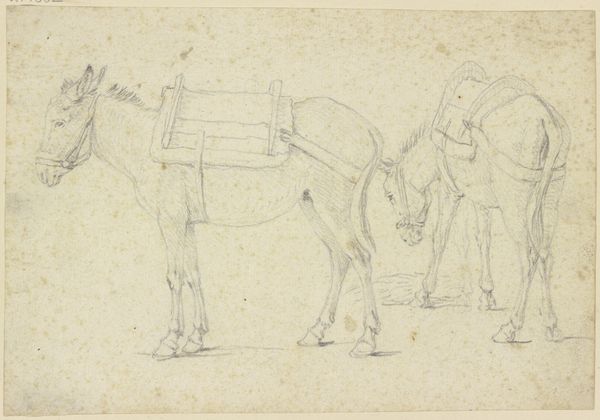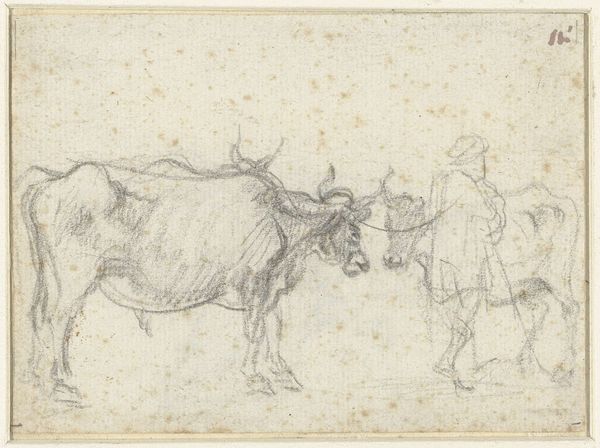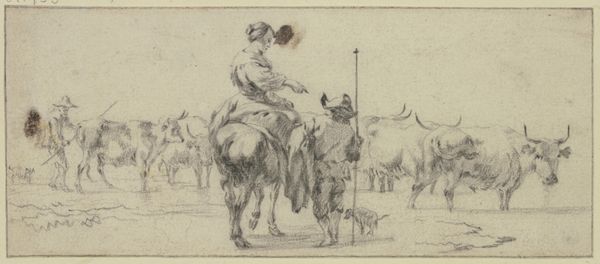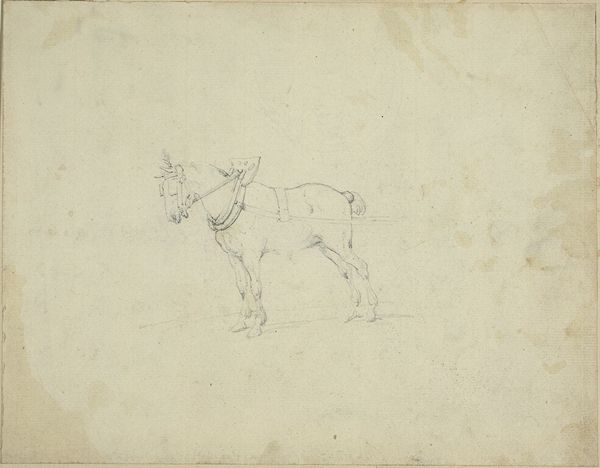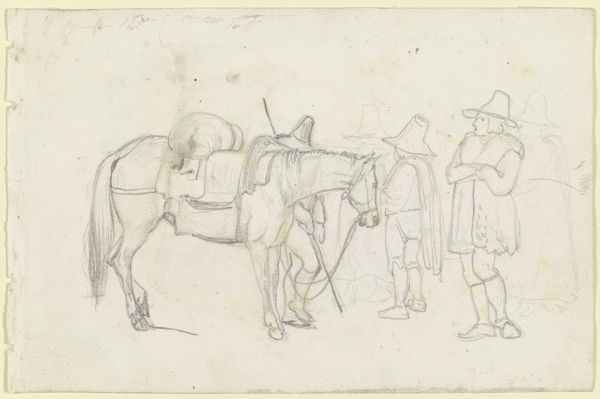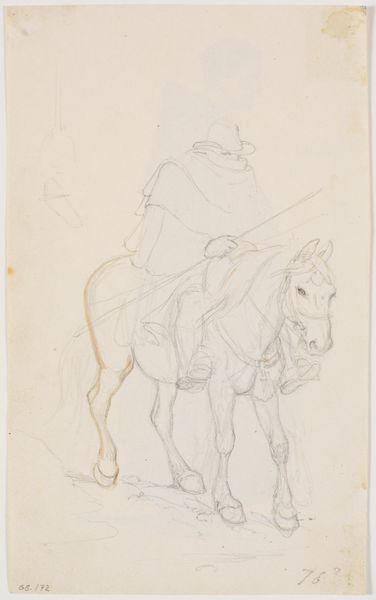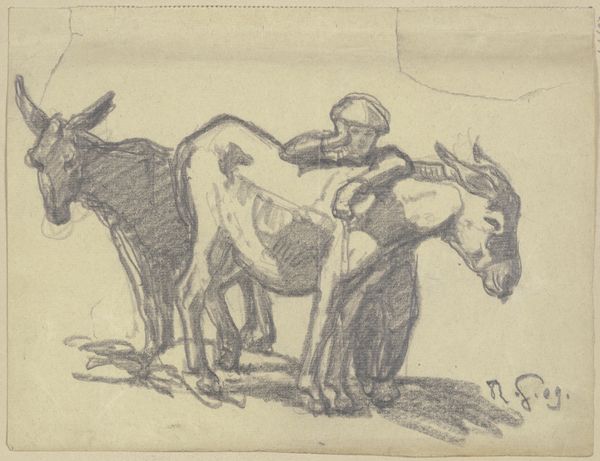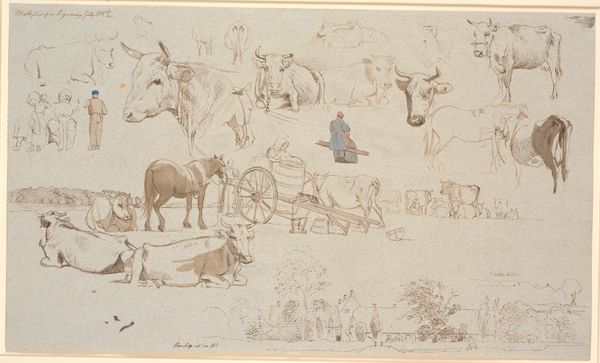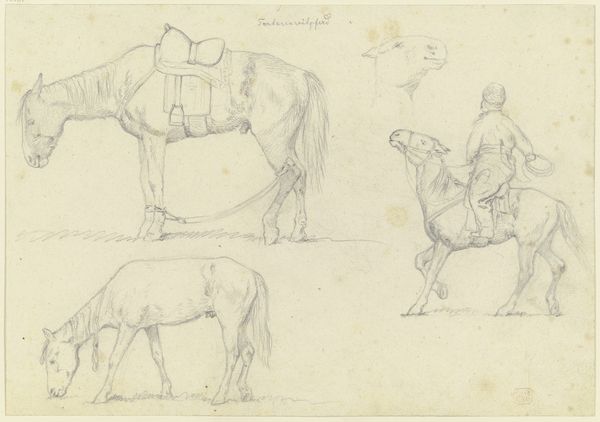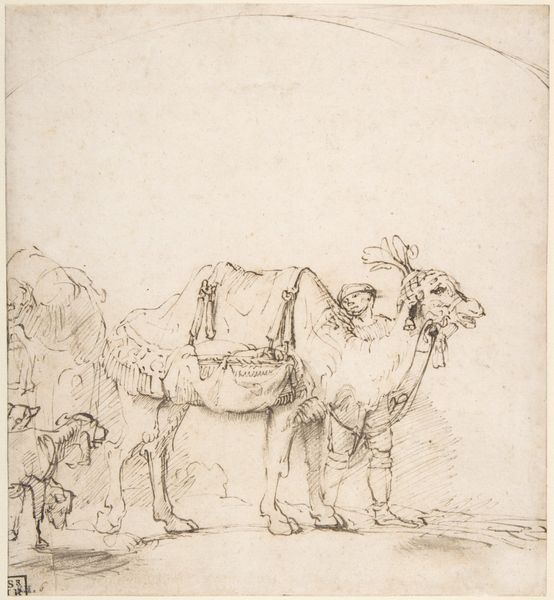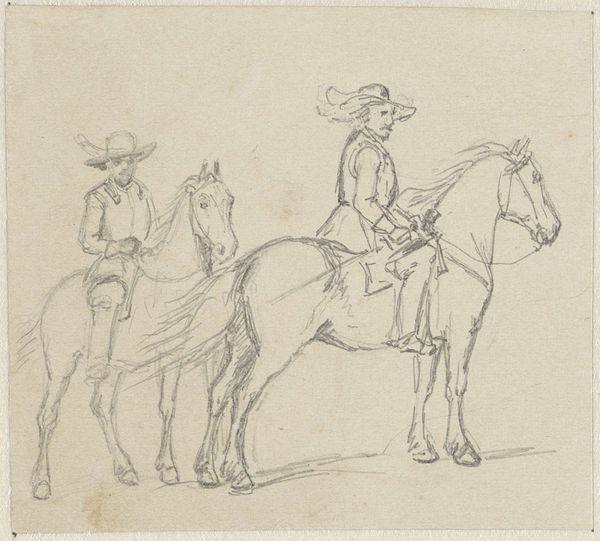
Dreng siddende på æsel og stående italiener med armene over kors 1845
0:00
0:00
drawing, pencil
#
portrait
#
drawing
#
pencil sketch
#
landscape
#
etching
#
romanticism
#
pencil
#
watercolor
#
realism
Dimensions: 204 mm (height) x 271 mm (width) (bladmaal)
Curator: This is Johan Thomas Lundbye’s “Boy Sitting on a Donkey and Standing Italian with Arms Crossed,” a pencil drawing from 1845. What catches your eye first? Editor: The lightness of the touch, definitely. The minimal use of line and wash creates an ethereal, almost dreamlike quality despite the seemingly mundane subject matter. The composition leads my eye across the page to encounter these separate figures, and then makes me wonder about their story. Curator: The context here is Lundbye's journey through Italy. This sketch, done in Civitella, becomes more than a simple depiction; it's a commentary on the artist's position as a traveler encountering different social realities and identities. How might class and regional identity be playing out here? Editor: I’m immediately drawn to the stark contrast in posture. The boy sits astride the donkey, seemingly in command, while the man stands passively, arms crossed, almost resigned. I wonder about their symbolic positioning relative to each other in space? Curator: Absolutely. This speaks volumes about power dynamics within that specific environment. Consider, too, how Italy, idealized during the Romantic period, was in reality fraught with poverty and inequality. Lundbye doesn't shy away from depicting this. How do you read this refusal of the idealized Italian landscape? Editor: The very sparseness of the work perhaps underscores this. There’s no romantic backdrop to distract us; instead, the focus is solely on the human figures and their relationship, which, though unclear, feels heavy with implication. Semiotically, the donkey acts as the fulcrum of social meaning. Curator: A great point. It disrupts the picturesque. And what's more, it directs us toward the lived experience of individuals shaped by their economic conditions, offering us a perspective that incorporates those complex factors that would go onto inform later realist painting. Editor: This artwork underscores how what appears to be a quick sketch is, in fact, a carefully considered visual study rife with socioeconomic observations and structured using refined and self-aware artistic decisions. Curator: Indeed, viewing Lundbye through a contemporary lens encourages dialogue around representation and the gaze in travel art. Editor: It really does reframe how we might look at the artist’s entire body of work.
Comments
No comments
Be the first to comment and join the conversation on the ultimate creative platform.
